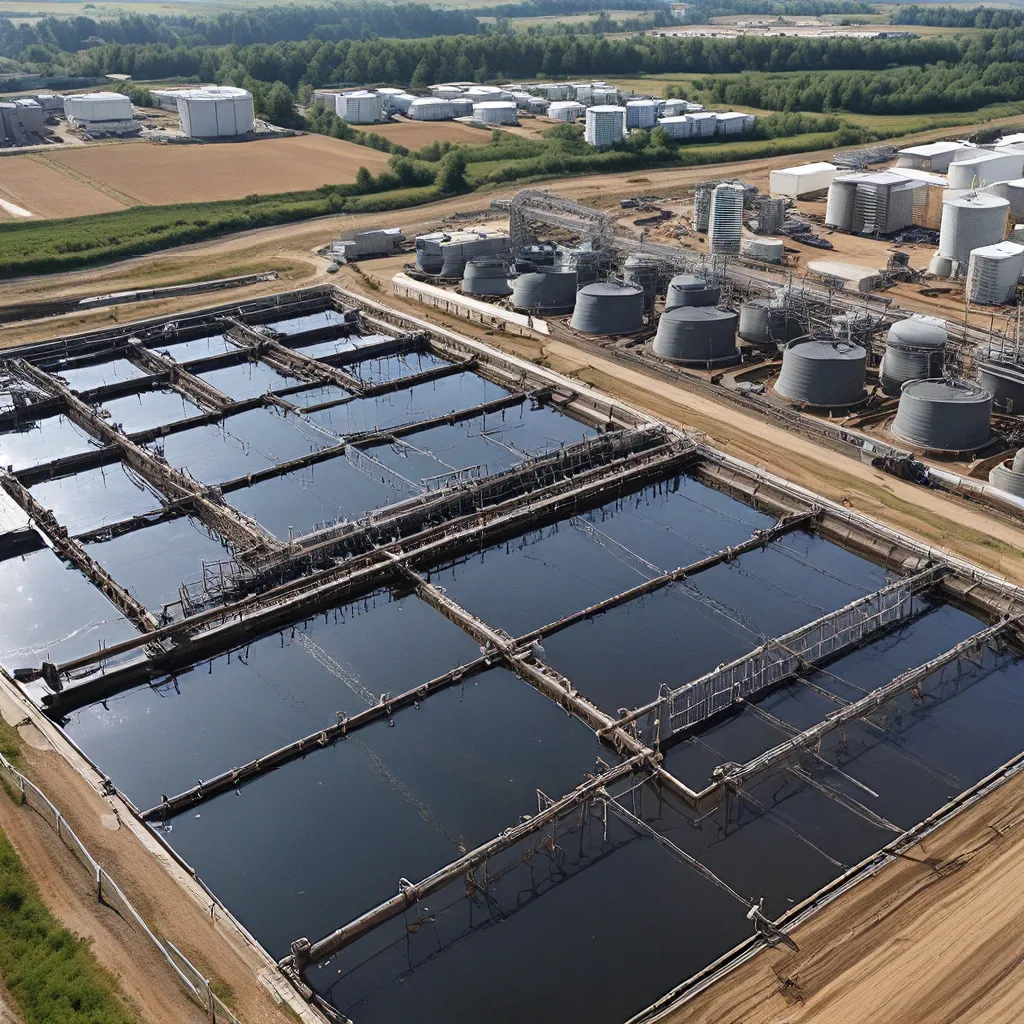
As an environmental enthusiast and someone deeply passionate about sustainable practices, I’ve always been fascinated by the world of wastewater treatment. It’s a field that not only manages the safe disposal of our used water but also holds immense potential for transforming waste into valuable resources. And that’s where the concept of the integrated biorefinery comes into play – a game-changing approach that’s poised to revolutionize the way we think about wastewater.
Unlocking the Potential of Wastewater
When I first learned about the integrated biorefinery model, I have to admit, I was a bit skeptical. How could something as seemingly mundane as wastewater hold the key to a more sustainable future? But as I delved deeper into the research, I was blown away by the sheer ingenuity and the far-reaching implications of this approach.
You see, wastewater is not just a byproduct that needs to be disposed of – it’s a rich tapestry of resources waiting to be harnessed. The integrated biorefinery concept recognizes this and aims to extract and repurpose these valuable components in a comprehensive, circular fashion. It’s a shift from the traditional linear “take, make, waste” model to a more regenerative system that minimizes waste and maximizes resource recovery.
Transforming Wastewater into a Treasure Trove
At the heart of the integrated biorefinery approach is the recognition of wastewater as a potential goldmine. This liquid stream is teeming with organic matter, nutrients, and even valuable chemicals and materials that can be recovered and repurposed for a variety of applications.
Studies have shown that wastewater can be a source of biofuels, biochemicals, and bioplastics, among other valuable products. By employing a range of advanced treatment technologies, we can extract and refine these resources, transforming waste into a treasure trove of sustainable solutions.
The Integrated Biorefinery Advantage
The beauty of the integrated biorefinery approach lies in its holistic and efficient nature. Instead of treating wastewater as a problem to be solved, it reframes it as an opportunity to create multiple revenue streams and reduce our reliance on fossil-based resources.
Experts suggest that this approach can minimize waste, reduce energy consumption, and lower greenhouse gas emissions, all while generating valuable co-products that can be sold or used within the same facility. It’s a closed-loop system that maximizes resource recovery and minimizes environmental impact.
But the benefits of the integrated biorefinery go beyond just the environmental aspect. It also holds the potential to create new economic opportunities and drive innovation in the wastewater treatment industry. By diversifying revenue streams and exploring new markets, wastewater treatment plants can become more financially sustainable and resilient in the face of changing regulations and economic conditions.
The Challenges and Opportunities
Of course, the transition to an integrated biorefinery model is not without its challenges. Implementing advanced treatment technologies, optimizing process flows, and navigating regulatory landscapes can all require significant investments and specialized expertise.
But the potential rewards far outweigh the hurdles. Ongoing research and pilot projects are constantly exploring new ways to enhance the efficiency and profitability of integrated biorefineries, pushing the boundaries of what’s possible.
And as more municipalities and industries embrace this approach, I believe we’ll see a surge of innovation and collaboration that will unlock even greater opportunities for transforming wastewater into a valuable resource.
Envisioning a Sustainable Future
As I reflect on the journey of discovery I’ve embarked on, I can’t help but feel a sense of excitement and optimism. The integrated biorefinery approach represents a paradigm shift in the way we perceive and manage wastewater, challenging us to rethink our assumptions and embrace a more holistic, sustainable** vision for the future.
Imagine a world where wastewater treatment plants are not just necessary evils, but thriving hubs of innovation and resource recovery. Where waste is no longer wasted, but transformed into renewable energy, biobased products, and valuable chemicals. A world where the circular economy isn’t just a lofty ideal, but a tangible reality that benefits both the environment and the bottom line**.
This is the future that the integrated biorefinery promises – a future where wastewater is no longer a problem to be solved, but a resource to be harnessed for the greater good. And as I continue to explore this exciting field, I can’t wait to see how it evolves and transforms our relationship with water and waste.